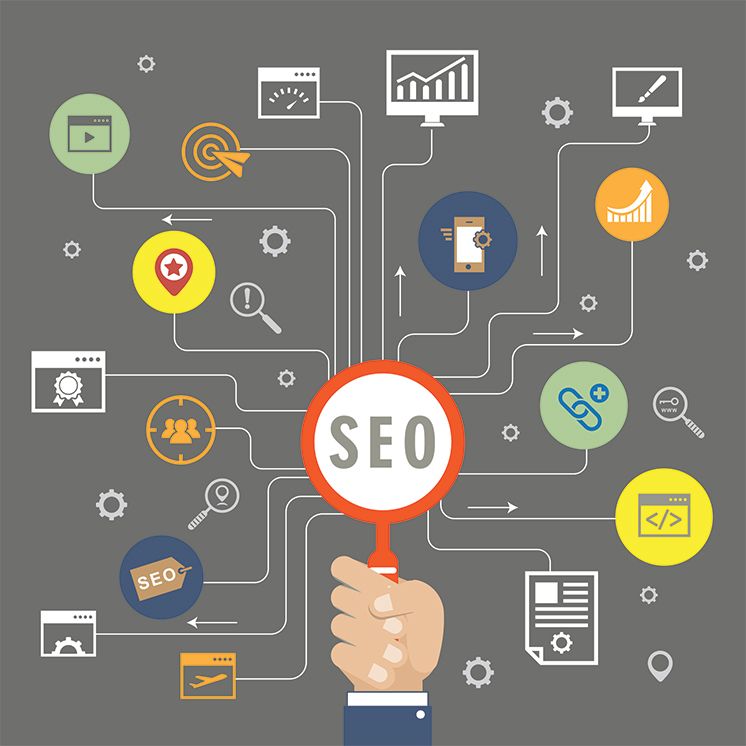
- Written by Terry Pierce
- 1 comment
- font size decrease font size increase font size
SEO: 9 On-Page Factors That Matter the Most
Much of modern SEO is focused on backlinks, authority, social media engagement, and other off-page factors. And while there's no argument over how important these are, they're not the end of the story.
On-page SEO is just as important as ever. Old-school tricks may no longer be enough to power a site up the rankings alone, but without a solid contribution from on-page optimization, a site won't rank for anything competitive.
Here's what to bear in mind when optimizing your pages, before even thinking about building links to them.
1) Title Tag
The title tag of a page performs two key functions in SEO. First, it sums up what the page is about, providing a context for the rest of the content.
Importantly, while a good title tag does little directly to boost rankings, a poor one can do a lot to suppress them. In particular, using the same generic title across multiple pages provides little differentiation, adding to the risks of duplicate content issues.
The second role of the title tag is in driving engagement. Often but not always, it's the title that's used in search results and social media posts. A compelling and readable title drives clicks, boosting engagement and sharpening Google's sense that a page is popular and therefore high quality.
2) Meta Description
Many of the same points apply to the meta description, although to a lesser extent as its power isn't as great. A good meta description includes relevant keywords to strengthen a page's topic focus, while also presenting a message that encourages clicks.
3) Headlines
The main headline is perhaps the single most important on-page factor. It should sum up the page's content, contain relevant keywords, and yet also be compelling enough to draw readers in.
This is a difficult balance to achieve, but it's a vital one. No matter how much time you spend on developing and optimizing your content, devote a significant proportion of it to nailing the headline.
4) Subheadings
Although they aren't critical to SEO success, subheadings play a strong supporting role. When carefully optimized, they can strengthen the theme of the page by introducing secondary keywords with a close semantic relationship.
Subheadings also provide structure to a page, making it easier for a reader to scan and understand the content. This feeds through into higher rankings as the algorithm seeks to reward a better user experience.
5) Bold and Italic Tags
Back in the day, enclosing your most important keywords in bold or italic tags was standard practice, albeit an often ugly one. The technique is much less effective now, but deftly enclosing your main keywords in bold or italics tags adds a little extra relevancy, and it all counts.
However, the effect is fairly minimal, so don't do it at the expense of good looks and readability.
6) Relevant Linking
Using focused anchor text to link to relevant pages gives a boost to both source and destination. From an on-page perspective, linking to either internal or external pages provides benefits.
However, there are two things to bear in mind.
- Linking to your site's internal pages keeps the benefits within your own site, as you're benefiting from both sides of the linking equation.
- Linking to external pages can boost your domain authority by increasing your site's value as a resource.
Therefore, use internal and external linking whenever each is appropriate, and don't worry unduly about hoarding your ranking power by keeping links in-house.
7) Tight Keyword Focus
Although including a range of related keywords is important to round out a page's topic profile, you need to decide which individual keyword you're targeting for each page.
If several pages on your site all include the same mix of keywords without any strong differentiation, their individual rankings risk being merged and suppressed. This effect is known as keyword cannibalization, and it's an important trap to avoid.
Make sure each page has a strong, clear focus on a primary keyword, and that no two pages supply the same overall profile.
8) Image Optimization
There are four ways to approach images with SEO in mind.
- Make sure you include relevant, accurate alt attributes to describe the image. It's a minor aspect in the ranking, but every little helps to add relevancy
- Good-looking images with optimized alt and title attributes can drive traffic through Google Image Search.
- Carefully chosen images enhance the user experience to drive engagement, with all the ranking benefits that brings.
- Reducing the file size of images increases loading speed, and this is a confirmed factor in ranking.
9) Content Quality
Lastly, no matter how carefully you optimize your on-page factors, it's all for nothing if your content isn't worth ranking highly. Google is highly adept at spotting low-quality content and demoting it accordingly.
Even more importantly, poor content also means poor user experience. Whatever traffic you generate won't convert into high engagement levels, driving down both immediate profits and long-term rankings.
It's undeniably difficult to rank a site unless it has a healthy backlink profile. However, without a strong foundation provided by on-page SEO, no amount of link building will be enough to thrive in a competitive sector.
Related items
1 comment
-

Hi, This is very helpful and your post are always best, informative, provides excellence information.
Great work I like your post. Thanks




